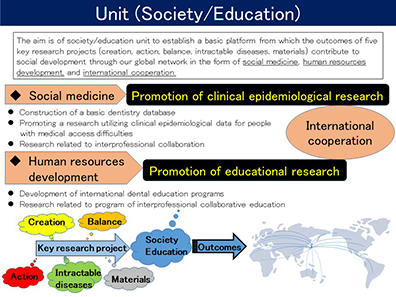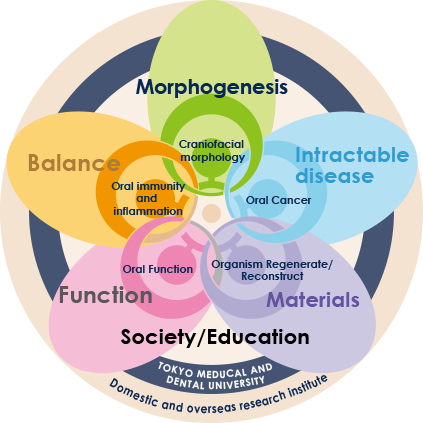Press Release
- How does estrogen protect bones? Unraveling a
pathway to menopausal bone loss
Tomoki Nakashima
Professor, Department of Cell Signaling, Graduate School of Medical and Dental Sciences, TMDU -
Systemic Administration of Toll-like Receptor 7 (TLR7) Agonist Enhances the Efficacy of Immune
Checkpoint Inhibitors
Miyuki Azuma
DDS, Ph.D., Professor Department of Molecular Immunology, Graduate School of Medical and Dental Sciences, TMDU
Ongoing research projects
Craniofacial Morphogenesis (Craniofacial Morphology)
Craniofacial morphology is the most complicated structure of the body, housing the brain, sense organs and feeding organs. It is also crucial in establishing identity in our living society. Birth defects in craniofacial structure are the most common among all congenital defects, and yet their etiology is still largely unknown. This research unit aims to clarify the cause of the anomalies through multidisciplinary, advanced research approaches based on human resources, model organisms, cells, molecules and computer models. In addition, our unit endeavors to develop methods of restoration and regeneration of craniofacial tissues with innovative biomaterials that are applicable to clinical practice. Based on the research outcomes, we will further new methods in the diagnosis, treatment and prevention of craniofacial defects, contributing to the dental, oral and craniofacial health of people.
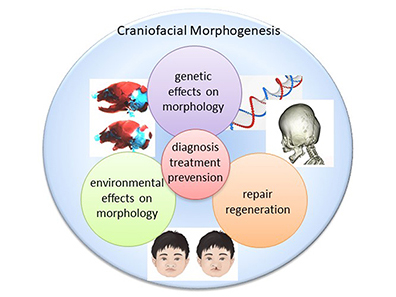
Balance (Oral immunity and inflammation)
A number of epidemiological studies have indicated some link between oral and systemic diseases; however, there is no scientific report clarifying the connection through evidence-based studies. Chronic periodontitis has been thought to be an infectious disease induced by different pathogenic bacteria. Recent understanding of microbiome analyses, including pathological and commensal bacteria, suggests that periodontitis is a kind of immune disorder caused by dysbiosis of the microbiome. The aim of this unit is to understand the molecular network between oral and systemic diseases by focusing on periodontal dysbiosis and immunological changes in oral and systemic sites, and to develop therapeutic approaches by managing the condition of oral cavities.
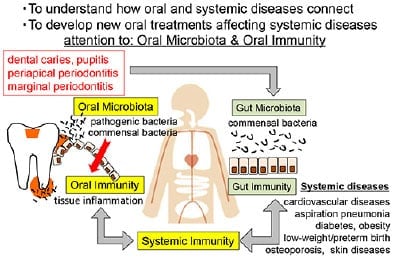
Function (Oral Function)
The oral and craniofacial region supports basic and essential functions in maintaining human life, including mastication and respiration. In addition, it bears functions important for our social life, including emotion and communication, which play intrinsic roles in human life. In our study, we perform both animal and human clinical studies using behavioral and neurophysiological methods. Through these approaches, we aim to develop treatment strategies by clarifying the mechanisms of maintenance, as well as failure and recovery, in functions in the regions in question.
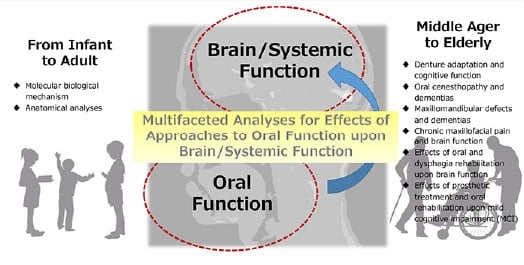
Intractable Diseases (Cancer)
In Japan, approximately 8,000 patients are diagnosed with oral cancer every year. Oral cancer is particularly dangerous because it often goes undetected by patients in the early stages, and because it has a high risk of metastasis to the lymph nodes of the neck. When oral cancer is discovered after it metastasizes, only half of diagnosed individuals have a 5-year-survival rate. At present, we are not aware of quality tumor markers to detect oral cancer in its early stages, or molecular mechanisms that indicate how normal oral epithelial cells become malignant cancer cells that threaten a patient’s life. Therefore, we aim to elucidate the mechanisms that underlie oral cancer development and progression using big data based on clinical samples obtained at TMDU. Furthermore, we will attempt to develop novel therapeutic strategies for oral cancers targeting various components of tumor microenvironment, including cancer cells, tumor vasculature and cancer associate fibroblasts. Our goal is to launch “Precision Medicine” for oral cancer by combining accurate diagnosis and personalized medicine consisting of surgical, chemical, radiation and immune therapies.
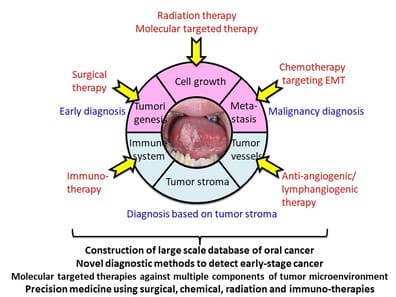
Materials (Organism Regeneration/Reconstruction)
Recent progress of safe, minimal invasion and esthetic dental treatments depends on the developments of dental materials, clinical skills and processing technology. State-of-art diagnostic technology enables reliable diagnosis that is minimally invasive for patients. In addition, regenerative medicine with tissue engineering shows significant progress. This project aims to enhance safe and minimally invasive treatments through the development of diagnosis, measurement and processing technologies, and new dental materials made possible through the collaboration between the dental and engineering fields.
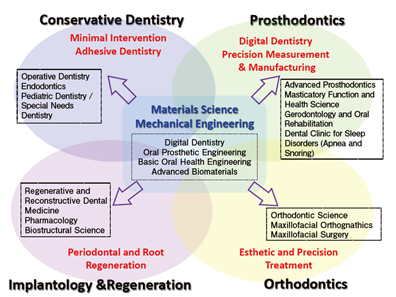
Society/Education
With the arrival of a super-aged society, the role of dentistry has continued to evolve along with the emergence of health problems including increased periodontal disease and caries in the elderly due to a higher number of remaining teeth, as well as increases in oral hypofunction and aspiration pneumonia due to oral bacteria. It is important to understand these changes based on data, and we have entered an era requiring individualized dental care that focuses on the relationship between oral health and systemic disease. In particular, amidst the COVID-19 pandemic, telemedicine has become an extremely important initiative in dentistry. This unit aims to establish a basic platform to reach outcomes in five key research projects that will contribute to social development in the form of social medicine, human resource development and international cooperation. To achieve this goal, we have established new research aims entitled “Promotion of clinical epidemiological research” and “Promotion of educational research.” The former involves promoting research utilizing hospital big data and clinical epidemiological data for people with medical access difficulties, and the latter involves studying interprofessional education and promoting the development of a global dentistry education program to foster advanced human resources. These activities are fundamental to transferring the outcomes of our key research projects worldwide through our global network.
